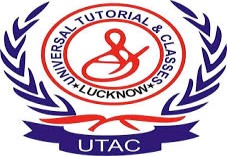Distance education or more commonly known as online learning needs to be clearly defined and understood. Without a crystal clear definition, meaningful research and conversation about education can’t happen.
Additionally, an exact definition is crucial for both students and teachers as well as Early Childhood Development (ECD) Practitioners. However, experts reflect that distance learning is harder to define. This is because its development quickly changes from the first-generation correspondence learning to 5th generation intelligent flexible education. Moreover, various published definitions are also available.
Hence, you may want to create a practical definition. Still, it’s quite useful to see how this definition has been created and tested until today.
Searching for the Right Definition
Research by Doug Valentine from the University of Oklahoma discusses definitions of distance learning by exploring the various opinions by experts and institutions of learning.
In 1988, Greenberg defined contemporary distance learning as planned learning and teaching experiences that used a broad variety of technology to reach learners at a distance and is particularly designed to help encourage the interaction of the learner and gain certification for learning.
Valentine, however, notes that this definition does not address whether the student is learning synchronously or asynchronously.
In 1999, Bliezner and Teaster’s definition clarified that distance learning happens when the learner is separate from possibilities and space.
Valentine, however, highlighted that the above two scholars didn’t mention technology at all.
In 2009, the Middle States Commission on Higher Education defines distance education as an educational process in which the majority or all of the instruction occurs with the student and instructor in different locations.
And in this definition, it mentions no tech or whether education should be synchronously or asynchronously.
Probably the most detailed and thorough definition ever given was of Keeegan’s (1995). He said that distance learning and education result from the technological separation of learner and teacher. Consequently, it frees the student from the requirement of traveling. It liberates him from going to a “fixed place, at a fixed time, in order to meet a fixed person, just to train himself.”
And although such definition is indeed in detail, it fails to define the term “education”.
Education and Learning Differ
Moreover, one may need defining online education for beginning successful research. This leads us to the question “What type of learning is happening with distance education?”
In 2013, King et al. concluded that learning means improved capabilities in behavior. And/or it may also mean the same for knowledge as a result of meditated experiences. These experiences are constrained by distance and/or time. These factors are in the sense that the learner doesn’t share a similar situation with what he is learning.
Although, to dive into the precise definition of education for research may be academically interesting. Still, it’s crucial to define education when distance, as well as traditional teachers and instructors, gather together for faculty development.
Differences in space and time for distance education place constraints. You won’t see and feel the need to address these confinements in traditional classrooms. As a matter of fact, faculty development might need to be created particularly for distance educators.
The Modern Definition
A better word to define distance education today is “online learning”. Advancement in technologies made distance learning and online education quite synonymous.
Further clarification distinguishes whether a class is a hybrid or totally online. A hybrid class is a combination of both online classes and brick-and-mortar classes. People also use “blended”. This is crucial to understand so that learners are aware that there is also a traditional brick-and-mortar attendance required.
And although it is not a part of a strict definition, it’s also crucial to clarify the timing of online learning as synchronous or asynchronous or maybe a combination of two. This is to help clarify to learners if they are required to attend scheduled classes or not.
Conclusion
It is extremely important to define the exact meaning of what distance learning means in today’s technological era, for both practical and research purposes. Without a detailed and precise definition, quality research on distance learning simply can’t take place.
In addition, both teachers and students need to have a better and clear understanding of what distance education entails before they take on distance classes or courses. And with the fast-paced refinement of technological tools, it is crucial that the definition of distance education is regularly updated.
You Might Want To Read:
Net Folk Literature Mock Test Paper 131, Electronics Communication Engineering Question Paper 2 1999, Sbi Clerk Pre Sample Paper With Solutions Set 05, Ugc Net French Mock Test Paper 38, Jipmer Model Paper English, Shri Ramswaroop Memorial University Lucknow, Smart Leaders Ias Academy Vs Officers Ias Academy, Delhi University Mhrod 1St Year Mock Test Paper 1, Haryana Board Class 10 Home Science Question Paper 1 2008, Upsc Csmains Mechanical Engineering Paper I Ii Question Paper 2012
Leave your vote
This post was created with our nice and easy submission form. Create your post!










Like what you read? Give author a thumbs up?
Bookmark this article to read later, drop a remark in comment section and share with your friends..